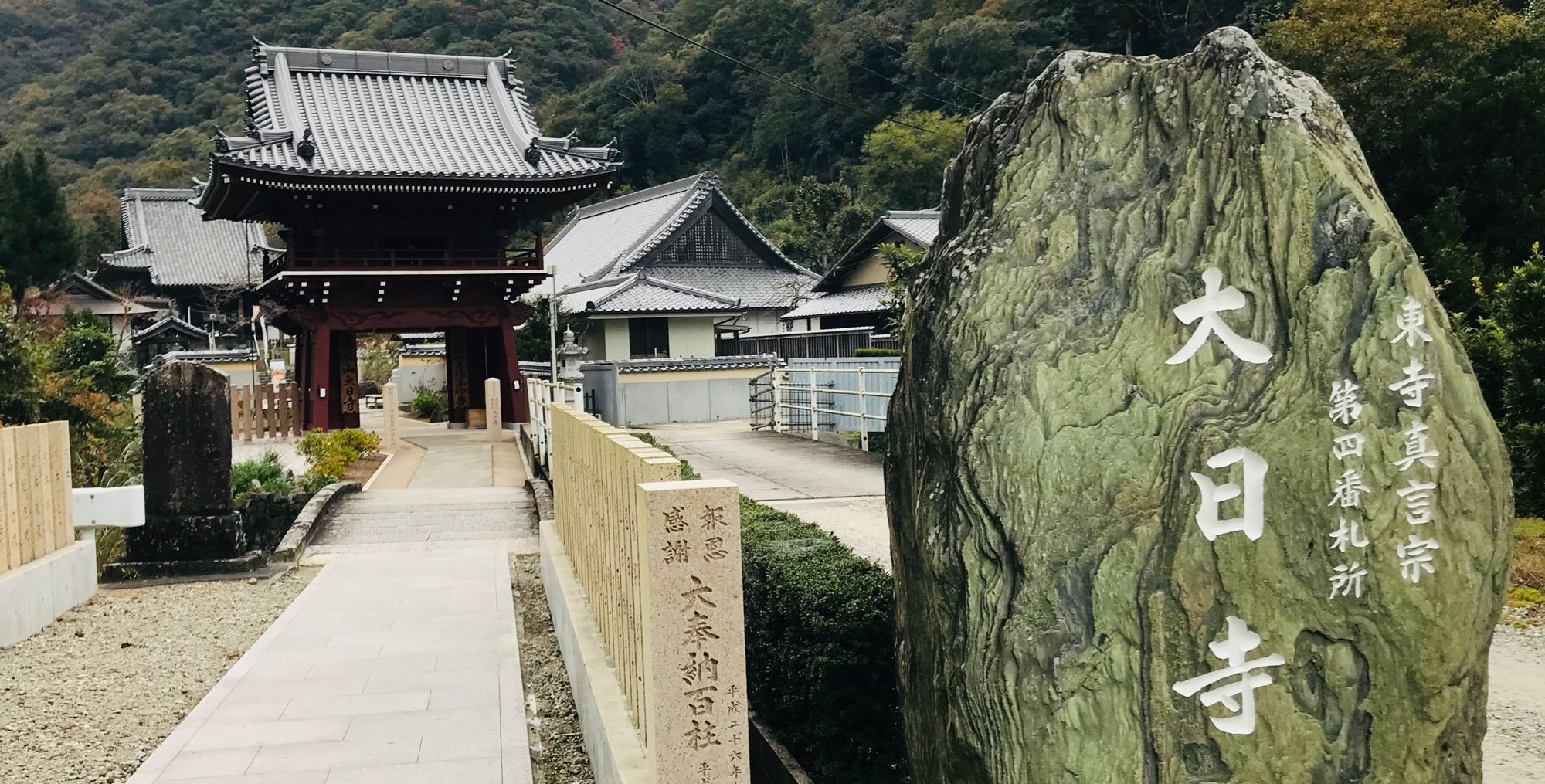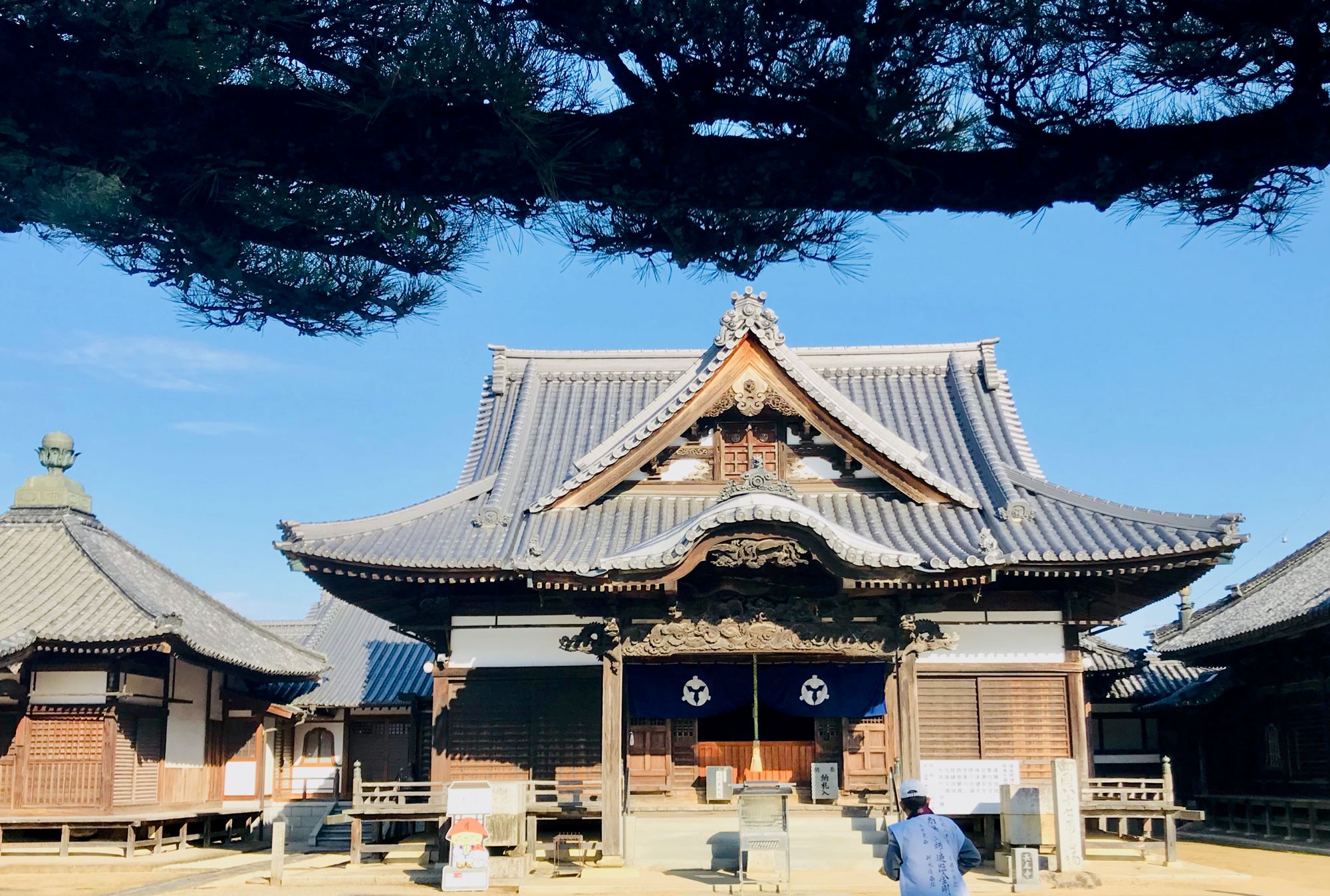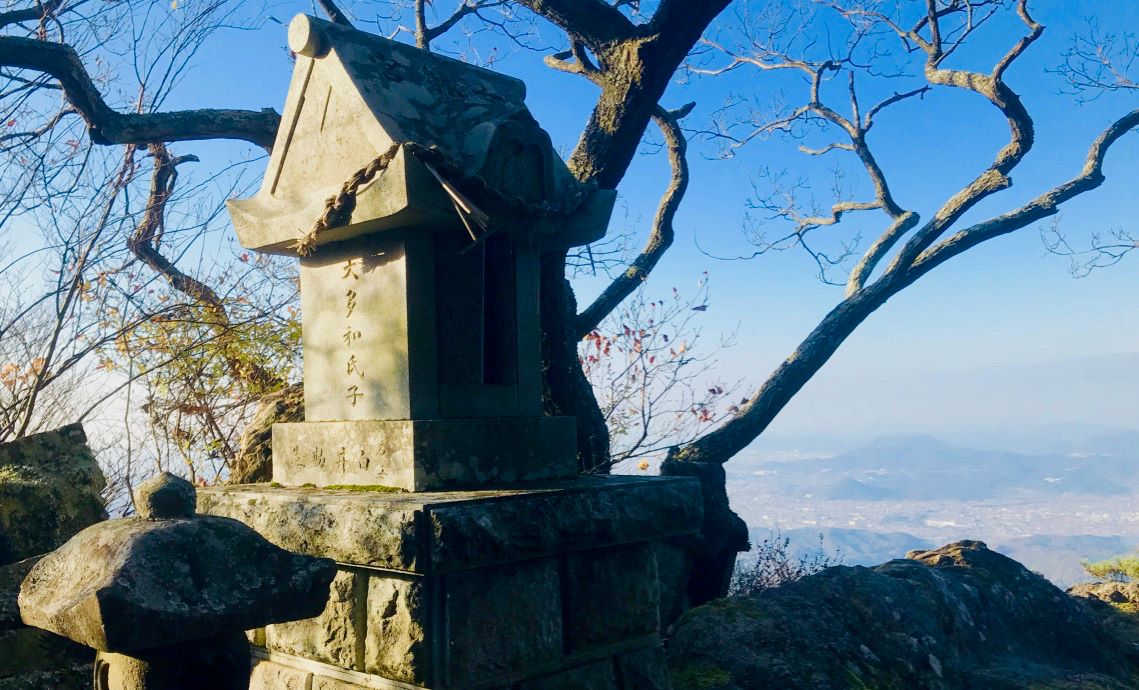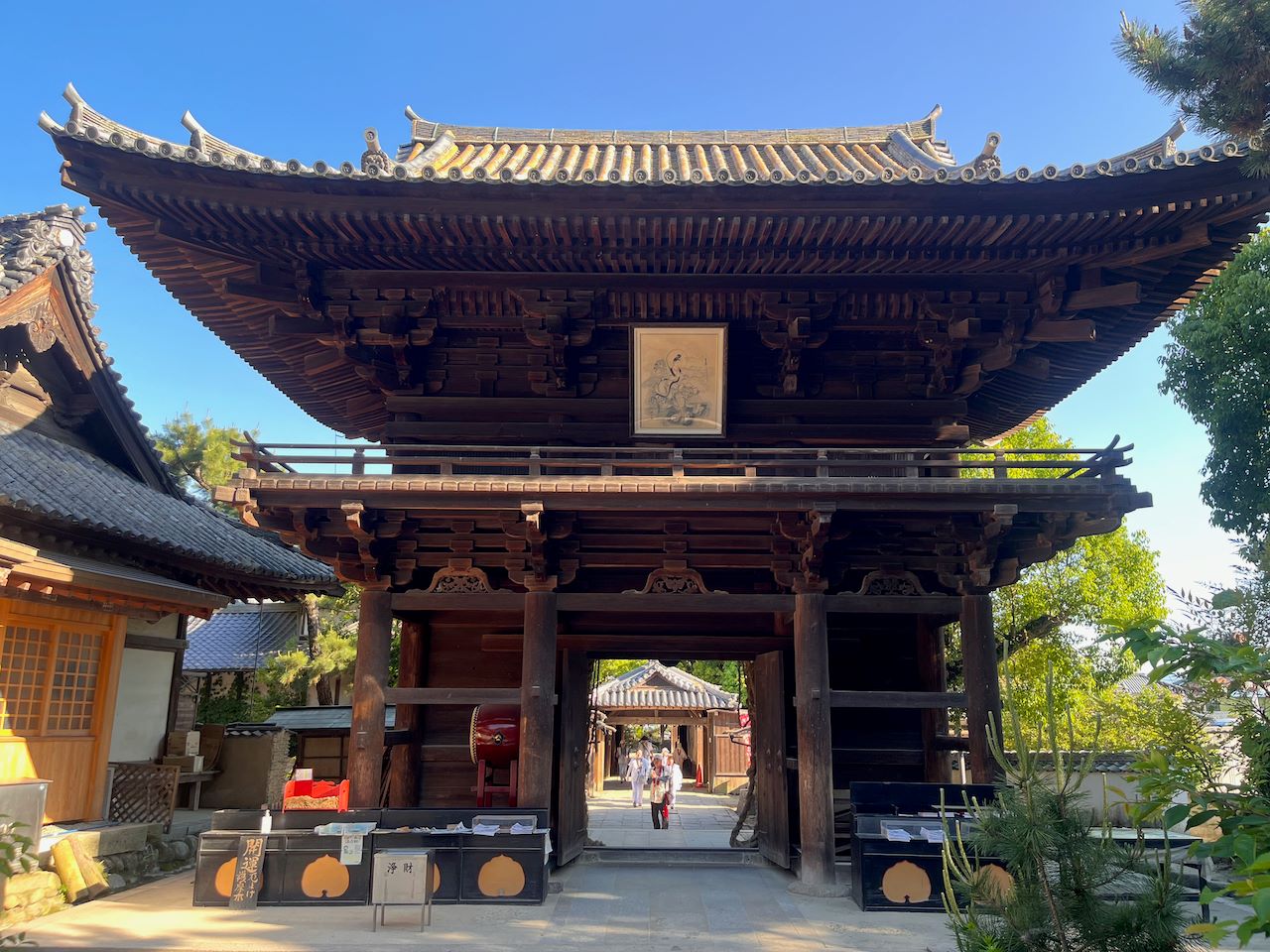 30 years' experience providing walking holidays worldwide
30 years' experience providing walking holidays worldwide-
SELF-GUIDED
-
7 DAYS
-
Challenging
OVERVIEW
OVERVIEW
This version of the pilgrimage walk contains some of the must-do sections of the 1200-year-old Shikoku Pilgrimage over 7 days including via the iconic onsen town of Matsuyama and Dogo Onsen’s healing waters.
The 1200km Shikoku Temple pilgrimage circumnavigates Shikoku Island and has 88 ‘official’ temples and numerous other sacred sites along the way. Join the Shikoku Pilgrims known as Ohenro-san, and undertake the journey on Shikoku to atone for sins, to pray for health and success, and pursue enlightenment. And in doing so, experience some of the mysteries and authentic Japanese culture on Japan’s least developed island, where natural beauty is in abundance.
HIGHLIGHTS:
- A trip for those who want a taste of the Shikoku Pilgrimage experience
- An ancient hike through Buddhist history together with an immersive Japanese cultural experience
- Hike with a light pack on ancient trails with wondrous views
- Marvel at the beautiful Temples along the way
- Soak in the Dogo Onsens mineral waters
- Walk some of the best of the Shikoku Pilgrimage on forest and mountain trails
- Options to vary the lengths of walks on some days should you prefer
ITINERARY
WHAT’S INCLUDED
-

JAPANESE CUISINE
-

JAPANESE STAYS
-

WALKING APP
-

CULTURAL IMMERSION
- 6-night stay in Japanese accommodations
- Walk with a light pack with luggage transfers most days from accommodation to accommodation
- Superb traditional multi-course meals for breakfast each day and 2 dinners
- Flexible itineraries – can be changed to shorten the walking or slow the trip down by adding more rest days – also see the 6 or 8 day walks
- Enjoy worry-free navigation with Stroll’s App and authored track notes and maps
- Support from Stroll and our local representatives on the ground
ACCOMMODATION & DINING
Each night you will be staying in hotels or traditional Japanese inns.
Most accommodations combine modern luxury and historical charm and in almost all you will find a combination of either traditional Japanese sleeping arrangements or both Western and Japanese styles. In some cases, they will have on-site natural hot spring communal bath houses.
Meals are elaborate affairs from a Western point of view served in a traditional dining area. When dinner is provided a traditional Kaiseki set meal is what is usually offered. Sometimes there is the option of a buffet at the larger Hotels. Lunches can be obtained in the many eateries and small supermarkets close to the accommodations or at cafes on the route. This allows you to choose what suits your pallet as Japanese lunches are often quite different to what we are used to. When dinner is not included it is because there are many eating establishments within walking distance to choose from.
GENERAL INFO
HIGH SEASON CHARGES
In Japan, there are some periods when locals travel en masse as they are on holiday. These times are best avoided as the accommodation costs escalate considerably (more than double). It would make a lot of sense if you could avoid these times. Otherwise, see below for high-season periods. This could lead to the cost of the trip increasing by 30% or more.
GOLDEN WEEK – GENERALLY BETWEEN 29TH APRIL TO 5TH MAY
OBON PERIOD – MID-AUGUST ( BETWEEN THE 10TH TO 20TH OF AUGUST)
KOYO SEASON – AUTUMN COLOUR CHANGE – 25TH NOVEMBER ONWARDS DEPENDING ON THE WEATHER
Please speak to the office to get a quote for the above times
AVAILABILITY
This walk is available from March to November, winter there may be too much snow and it will be cold. Many people prefer to walk in spring to see the cherry blossoms and in autumn because of the change of seasons and the good weather.
HOW TO GET THERE AND AWAY
Travelling to the Start of the walk
This walk starts on Shikoku Island in TOKUSHIMA CITY.
You will need to get yourself to and from the start and end of your walk (i.e. you will need to organise your travel to the start of the walk in Tokushima City and onwards from your last accommodation. To make it easy we have collated some useful information that will assist you in making arrangements for your travel.
By Air: By far, the best option is to fly into Osaka. From there see options below for getting to Tokushima from both Osaka and Tokyo. If you do fly into Tokyo you can catch a flight with either JAL or ANA directly to Tokushima Airport. The flight time is 1hr 15mins.
Highway Limousine Bus: If you fly into KIX Osaka International Airport you can catch the Kansai Airport Limousine bus directly from the airport to Tokushima. Travel time is 2hr 40min. Departs every hour.
By Train: If you are travelling from Osaka to Tokushima you will need to go via Shin-Osaka and Okayama. The fastest travel time is 3hr 20min (only if you catch the rapid train from Okayama to Tokushima). The rapid train only departs twice a day at 11.05am and 7.05pm. If you don’t connect with the rapid train the travel time is approximately 4hr 49min to 5 hr.
By Train & Bus: If you are travelling from Osaka to Tokushima by train and bus you will catch the train to Maiko and a bus to Tokushima. Travel time is 2hr 30 min. If you are travelling from Tokyo to Tokushima you can catch a train to Shin-Osaka and onto Maiko. From Maiko you will catch a bus to Tokushima. Travel time is 5hr 20min. Alternatively there is a train from Tokyo to Shin-Kobe and then a bus to Tokushima. Travel time is 5hr 20min.
The train station at Osaka is right there at the airport, and there are English speaking staff at the ticket office. You might consider spending some time in Osaka. Osaka is a very interesting city and has many beautiful temples and of course Osaka Castle. In spring it is particularly beautiful. It also has a sophisticated restaurant culture and markets that seem to go on for kilometres, literally.
Japan has one of the best train systems in the world, so it’s very easy to catch a train to any destination in the country. An express train is the fastest way to travel to the area. Travelling in Japan on trains is a seamless experience, and it is not necessary to always pre-purchase tickets. There’s plenty of Rail staff that speak English well enough to direct you the right way and to converse with you about how to buy your ticket. We can provide more information if you wish, so please ask one of our destination consultants.
Japan Transit Planner is a great website resource to figure out when and where your train departs. It might be best to buy your train ticket on the JR train network when you first arrive in Japan so you can relax. However, the trains run often and are so efficient that you shouldn’t have any trouble just arriving 20 minutes beforehand and buying a ticket. JR passes can be a convenient and reasonable way to get around the area.
Travelling from the end of the walk
By rail: It makes sense to catch the train back to Osaka (or Tokyo) from the end of the trip. See above for information regarding train or bus connections.
By Air: See above
Transport on the walk
For most days on this walk you will need to take some form of public transport whether that is a bus or a train to your accommodation for the night or to start or shorten the day’s walk. The journey times vary from 20mins to 2hr depending on the day. On the day when you travel to Matsuyama the train journey will take approx 2.5hrs. We provide a comprehensive public transport document with detailed instructions on which buses and trains to catch. Please note these trips are unable to be pre-booked and you will need to pay directly on the day they are not included in your package.
There are 2 pre-paid taxi transfers included as part of your package. These are at the end of Day 2 and the beginning of Day 3. If you need to use taxi’s for other transfers during the walk they will be at your own cost.
If you have any questions about the public transport on this holiday please feel welcome to call or email the office.
LUGGAGE TRANSFERS
On this holiday you will not see your main luggage every night. Please organise yourself accordingly and pack a few overnight things to take with you when you walk as required. We will provide you with comprehensive notes outlining what you will need to do with your luggage and when/where you will receive it. On most occasions it will be stored at the Hotel Reception for your return the following day. On the day you travel from TOKUSHIMA to TAKAMATSU your luggage is collected from hotel reception and will be delivered (via courier) where you will receive it the following day when you arrive in KOTOHIR
WEATHER
From the end of March, the temperature begins to increase. In summer it’s quite warm and humid but still good for walking, particularly if you enjoy warmer temperatures and taking a dip in a stream.
The walk is offered in winter but bring some warm clothes and good rain gear. The area is just as beautiful if not more and is not busy at all. Soaking in an outside onsen in the cool of the night is one of those real authentic Japanese experiences that you can look forward to after a big day on the track.
As walkers, we believe spring and autumn to be the best time as the weather is perfect for walking.
See the weather information about Osaka’s average weather at different times of the year.
INSURANCE
We require that you have adequate travel insurance against potential losses, damage or injury, including cancellation costs and loss of luggage.
For all trips that require international travel, you must have purchased travel insurance that also includes medical evacuation coverage.
We also charge a cancellation fee if you cancel your walking holiday after we have confirmed it to cover costs incurred from our suppliers and in the office. See the FAQ section for more information.
INFORMATION PACK
For over 30 years we have taken pride in providing seamlessly organised walking holidays, but we know, even with that in mind, that you’ll have many more questions. You will receive a very detailed information pack and itinerary approximately 6 weeks out from departure outlining all the fine detail and much more.
CONTACT
If you have any questions, feel free to ask one of our destination consultants. You can get in touch with us via our contact form or email us at info@stroll.com
MAP
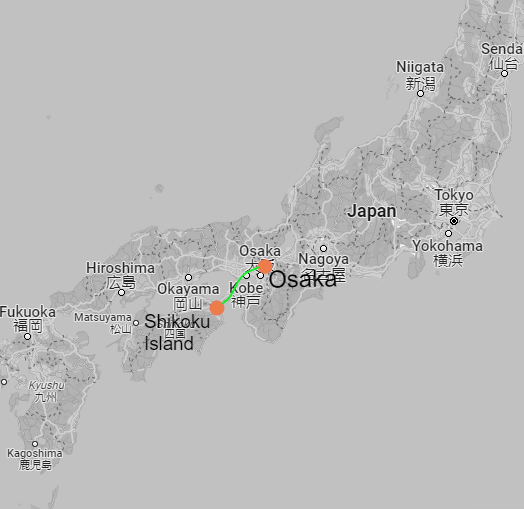
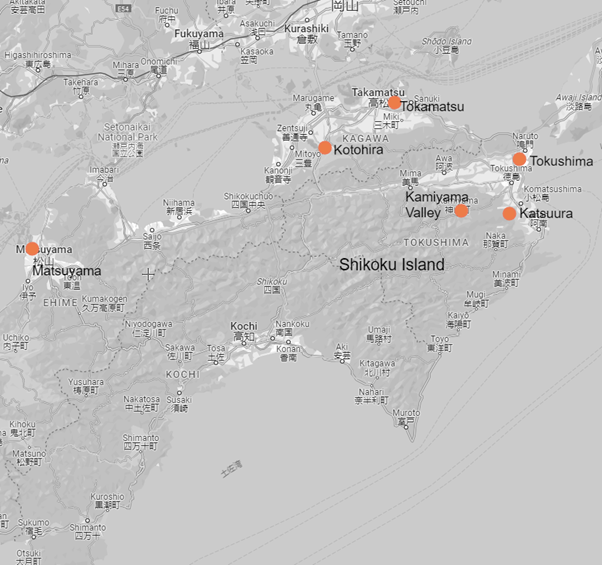
sections
This version of the pilgrimage walk contains some of the must-do sections of the 1200-year-old Shikoku Pilgrimage over 7 days including via the iconic onsen town of Matsuyama and Dogo Onsen’s healing waters.
The 1200km Shikoku Temple pilgrimage circumnavigates Shikoku Island and has 88 ‘official’ temples and numerous other sacred sites along the way. Join the Shikoku Pilgrims known as Ohenro-san, and undertake the journey on Shikoku to atone for sins, to pray for health and success, and pursue enlightenment. And in doing so, experience some of the mysteries and authentic Japanese culture on Japan’s least developed island, where natural beauty is in abundance.
HIGHLIGHTS:
- A trip for those who want a taste of the Shikoku Pilgrimage experience
- An ancient hike through Buddhist history together with an immersive Japanese cultural experience
- Hike with a light pack on ancient trails with wondrous views
- Marvel at the beautiful Temples along the way
- Soak in the Dogo Onsens mineral waters
- Walk some of the best of the Shikoku Pilgrimage on forest and mountain trails
- Options to vary the lengths of walks on some days should you prefer
-

JAPANESE CUISINE
-

JAPANESE STAYS
-

WALKING APP
-

CULTURAL IMMERSION
- 6-night stay in Japanese accommodations
- Walk with a light pack with luggage transfers most days from accommodation to accommodation
- Superb traditional multi-course meals for breakfast each day and 2 dinners
- Flexible itineraries – can be changed to shorten the walking or slow the trip down by adding more rest days – also see the 6 or 8 day walks
- Enjoy worry-free navigation with Stroll’s App and authored track notes and maps
- Support from Stroll and our local representatives on the ground
Each night you will be staying in hotels or traditional Japanese inns.
Most accommodations combine modern luxury and historical charm and in almost all you will find a combination of either traditional Japanese sleeping arrangements or both Western and Japanese styles. In some cases, they will have on-site natural hot spring communal bath houses.
Meals are elaborate affairs from a Western point of view served in a traditional dining area. When dinner is provided a traditional Kaiseki set meal is what is usually offered. Sometimes there is the option of a buffet at the larger Hotels. Lunches can be obtained in the many eateries and small supermarkets close to the accommodations or at cafes on the route. This allows you to choose what suits your pallet as Japanese lunches are often quite different to what we are used to. When dinner is not included it is because there are many eating establishments within walking distance to choose from.
HIGH SEASON CHARGES
In Japan, there are some periods when locals travel en masse as they are on holiday. These times are best avoided as the accommodation costs escalate considerably (more than double). It would make a lot of sense if you could avoid these times. Otherwise, see below for high-season periods. This could lead to the cost of the trip increasing by 30% or more.
GOLDEN WEEK – GENERALLY BETWEEN 29TH APRIL TO 5TH MAY
OBON PERIOD – MID-AUGUST ( BETWEEN THE 10TH TO 20TH OF AUGUST)
KOYO SEASON – AUTUMN COLOUR CHANGE – 25TH NOVEMBER ONWARDS DEPENDING ON THE WEATHER
Please speak to the office to get a quote for the above times
AVAILABILITY
This walk is available from March to November, winter there may be too much snow and it will be cold. Many people prefer to walk in spring to see the cherry blossoms and in autumn because of the change of seasons and the good weather.
HOW TO GET THERE AND AWAY
Travelling to the Start of the walk
This walk starts on Shikoku Island in TOKUSHIMA CITY.
You will need to get yourself to and from the start and end of your walk (i.e. you will need to organise your travel to the start of the walk in Tokushima City and onwards from your last accommodation. To make it easy we have collated some useful information that will assist you in making arrangements for your travel.
By Air: By far, the best option is to fly into Osaka. From there see options below for getting to Tokushima from both Osaka and Tokyo. If you do fly into Tokyo you can catch a flight with either JAL or ANA directly to Tokushima Airport. The flight time is 1hr 15mins.
Highway Limousine Bus: If you fly into KIX Osaka International Airport you can catch the Kansai Airport Limousine bus directly from the airport to Tokushima. Travel time is 2hr 40min. Departs every hour.
By Train: If you are travelling from Osaka to Tokushima you will need to go via Shin-Osaka and Okayama. The fastest travel time is 3hr 20min (only if you catch the rapid train from Okayama to Tokushima). The rapid train only departs twice a day at 11.05am and 7.05pm. If you don’t connect with the rapid train the travel time is approximately 4hr 49min to 5 hr.
By Train & Bus: If you are travelling from Osaka to Tokushima by train and bus you will catch the train to Maiko and a bus to Tokushima. Travel time is 2hr 30 min. If you are travelling from Tokyo to Tokushima you can catch a train to Shin-Osaka and onto Maiko. From Maiko you will catch a bus to Tokushima. Travel time is 5hr 20min. Alternatively there is a train from Tokyo to Shin-Kobe and then a bus to Tokushima. Travel time is 5hr 20min.
The train station at Osaka is right there at the airport, and there are English speaking staff at the ticket office. You might consider spending some time in Osaka. Osaka is a very interesting city and has many beautiful temples and of course Osaka Castle. In spring it is particularly beautiful. It also has a sophisticated restaurant culture and markets that seem to go on for kilometres, literally.
Japan has one of the best train systems in the world, so it’s very easy to catch a train to any destination in the country. An express train is the fastest way to travel to the area. Travelling in Japan on trains is a seamless experience, and it is not necessary to always pre-purchase tickets. There’s plenty of Rail staff that speak English well enough to direct you the right way and to converse with you about how to buy your ticket. We can provide more information if you wish, so please ask one of our destination consultants.
Japan Transit Planner is a great website resource to figure out when and where your train departs. It might be best to buy your train ticket on the JR train network when you first arrive in Japan so you can relax. However, the trains run often and are so efficient that you shouldn’t have any trouble just arriving 20 minutes beforehand and buying a ticket. JR passes can be a convenient and reasonable way to get around the area.
Travelling from the end of the walk
By rail: It makes sense to catch the train back to Osaka (or Tokyo) from the end of the trip. See above for information regarding train or bus connections.
By Air: See above
Transport on the walk
For most days on this walk you will need to take some form of public transport whether that is a bus or a train to your accommodation for the night or to start or shorten the day’s walk. The journey times vary from 20mins to 2hr depending on the day. On the day when you travel to Matsuyama the train journey will take approx 2.5hrs. We provide a comprehensive public transport document with detailed instructions on which buses and trains to catch. Please note these trips are unable to be pre-booked and you will need to pay directly on the day they are not included in your package.
There are 2 pre-paid taxi transfers included as part of your package. These are at the end of Day 2 and the beginning of Day 3. If you need to use taxi’s for other transfers during the walk they will be at your own cost.
If you have any questions about the public transport on this holiday please feel welcome to call or email the office.
LUGGAGE TRANSFERS
On this holiday you will not see your main luggage every night. Please organise yourself accordingly and pack a few overnight things to take with you when you walk as required. We will provide you with comprehensive notes outlining what you will need to do with your luggage and when/where you will receive it. On most occasions it will be stored at the Hotel Reception for your return the following day. On the day you travel from TOKUSHIMA to TAKAMATSU your luggage is collected from hotel reception and will be delivered (via courier) where you will receive it the following day when you arrive in KOTOHIR
WEATHER
From the end of March, the temperature begins to increase. In summer it’s quite warm and humid but still good for walking, particularly if you enjoy warmer temperatures and taking a dip in a stream.
The walk is offered in winter but bring some warm clothes and good rain gear. The area is just as beautiful if not more and is not busy at all. Soaking in an outside onsen in the cool of the night is one of those real authentic Japanese experiences that you can look forward to after a big day on the track.
As walkers, we believe spring and autumn to be the best time as the weather is perfect for walking.
See the weather information about Osaka’s average weather at different times of the year.
INSURANCE
We require that you have adequate travel insurance against potential losses, damage or injury, including cancellation costs and loss of luggage.
For all trips that require international travel, you must have purchased travel insurance that also includes medical evacuation coverage.
We also charge a cancellation fee if you cancel your walking holiday after we have confirmed it to cover costs incurred from our suppliers and in the office. See the FAQ section for more information.
INFORMATION PACK
For over 30 years we have taken pride in providing seamlessly organised walking holidays, but we know, even with that in mind, that you’ll have many more questions. You will receive a very detailed information pack and itinerary approximately 6 weeks out from departure outlining all the fine detail and much more.
CONTACT
If you have any questions, feel free to ask one of our destination consultants. You can get in touch with us via our contact form or email us at info@stroll.com









